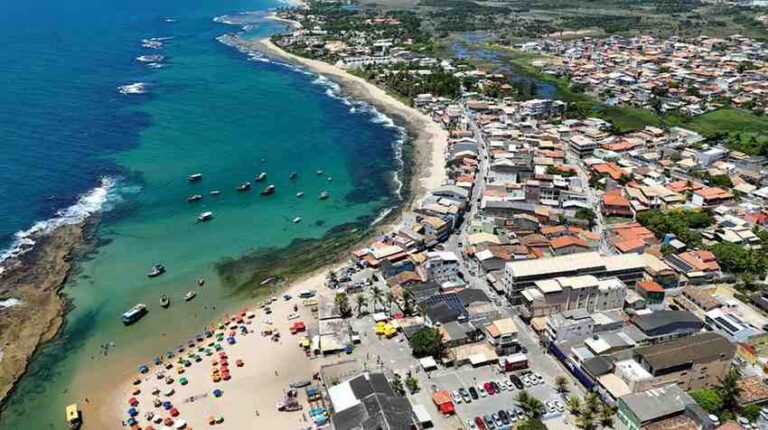Hidden European Cities You Should Visit Next
Europe’s famous cities – Paris, Rome, London – often steal the spotlight. But beyond these well-trodden destinations lie dozens of hidden gems waiting to be discovered. These lesser-known European cities offer authentic culture, fascinating history, and a slower pace that makes travel feel more personal. In 2025, with travelers seeking deeper connections and crowd-free experiences, these underrated European cities are stepping into the spotlight. Whether you’re into cobblestone streets, coastal views, or medieval charm, this guide reveals the hidden European cities you should visit next – before everyone else does.
Why You Should Explore Hidden European Cities
Traveling to Europe’s lesser-known cities provides a richer and often more affordable experience. You can stroll through local markets, talk to residents, and enjoy stunning landmarks without the tourist crowds. These cities often preserve their traditions more authentically because they’re not yet commercialized. In 2025, offbeat travel is growing as people seek immersion over mass tourism. By exploring these hidden destinations, you support local communities, discover unique cuisines, and uncover the real heart of Europe.
1. Ljubljana, Slovenia – Europe’s Green Jewel
Ljubljana may be small, but it radiates an incredible mix of history, creativity, and eco-conscious charm. The Slovenian capital’s car-free old town is lined with pastel buildings, riverside cafés, and art galleries. A medieval castle watches over the city, while the Ljubljanica River flows peacefully below. Ljubljana has been recognized as one of Europe’s greenest capitals, with locals biking and kayaking through town instead of driving. For food lovers, the Central Market and riverside restaurants showcase farm-to-table cuisine and local wines.
Why Visit
Ljubljana offers the best of both worlds – urban culture and quick access to nature. Within an hour, you can reach Lake Bled, the Julian Alps, or charming vineyards. It’s perfect for travelers who want to blend city life with outdoor adventures.
2. Ghent, Belgium – The Fairytale City That Locals Love
While Bruges often gets all the attention, Ghent quietly shines as one of Belgium’s most authentic and vibrant cities. Its medieval center, canals, and Gothic architecture rival any postcard-perfect destination. Yet Ghent feels lived-in – a real city filled with students, artists, and friendly locals. The historic Gravensteen Castle, the illuminated canals at night, and the city’s thriving café culture make it a hidden treasure for travelers seeking history without the crowds.
Why Visit
Ghent perfectly balances medieval charm with modern energy. Visit for its art museums, music festivals, and street art scene. It’s also a leader in sustainability – Ghent was one of the first cities in Europe to introduce a weekly vegetarian day.

3. Bratislava, Slovakia – Between History and Modern Cool
Bratislava, perched on the Danube River, is a compact capital packed with personality. Its pastel-colored old town is filled with quirky sculptures, cozy coffee shops, and centuries-old palaces. The city blends medieval heritage with a youthful spirit, thanks to its growing tech scene and vibrant nightlife. The Bratislava Castle, perched on a hill, offers panoramic views over the river and neighboring Austria and Hungary.
Why Visit
Bratislava is perfect for short getaways and budget-friendly travel. You can easily explore the city in a few days, enjoy Slovak cuisine like bryndzové halušky (potato dumplings with cheese), and hop on a boat to Vienna – just an hour away.
4. Porto, Portugal – A Riverside City of Wine and Warmth
Though gaining recognition, Porto still feels wonderfully authentic. The city’s terracotta rooftops, narrow alleys, and colorful riverfront make it one of Europe’s most picturesque destinations. Famous for its port wine cellars, the city also offers world-class architecture, such as the Dom Luís I Bridge and the Livraria Lello bookstore. Stroll along the Ribeira district, sample traditional francesinha sandwiches, and take a scenic cruise along the Douro River.
Why Visit
Porto combines old-world charm with creative energy. It’s more relaxed than Lisbon but equally rich in culture, food, and design. The nearby Douro Valley vineyards also make it an ideal stop for wine lovers.
5. Riga, Latvia – Art Nouveau Meets Baltic Cool
Riga, the capital of Latvia, is one of the Baltic region’s most underrated gems. Its old town is a UNESCO World Heritage site filled with Gothic churches, medieval squares, and elegant architecture. But Riga’s true beauty lies in its Art Nouveau buildings – among the finest in Europe. The city also has a growing creative scene with hip cafés, design shops, and local markets.
Why Visit
Riga offers great value for travelers who want European elegance without the price tags of Western capitals. Its proximity to forests and beaches makes it easy to combine city sightseeing with nature escapes.
6. Sibiu, Romania – Transylvania’s Cultural Heart
Sibiu, located in the heart of Transylvania, surprises travelers with its colorful architecture and lively atmosphere. Once a Saxon settlement, the city still carries strong Germanic influences in its towers, bridges, and cobblestone streets. Its medieval old town feels straight out of a storybook. Each summer, Sibiu hosts one of Europe’s biggest theater festivals, and its Christmas markets rival those of Germany.
Why Visit
Sibiu is ideal for travelers seeking history, charm, and authenticity. It’s also close to the Carpathian Mountains, making it a great base for hiking and exploring Romania’s scenic countryside.
7. Valletta, Malta – A Tiny City with Monumental History
Valletta, Malta’s capital, may be one of Europe’s smallest capitals, but it’s bursting with historical and architectural treasures. Built by the Knights of St. John, this fortified city is a masterpiece of Baroque design. The golden limestone streets, grand cathedrals, and sea views create an atmosphere unlike anywhere else in Europe. Despite its UNESCO status, Valletta remains surprisingly laid-back and compact enough to explore on foot.
Why Visit
Valletta’s size makes it perfect for short trips, and its blend of Mediterranean culture, history, and modern art gives it depth far beyond its size. The island’s beaches and coastal towns are just a short ride away, offering the best of both worlds.
8. Bergen, Norway – Gateway to the Fjords
Bergen may be Norway’s second-largest city, but it retains the charm of a small coastal town. Colorful wooden houses line the Bryggen Wharf, a UNESCO World Heritage site, while surrounding mountains create a dramatic backdrop. The city is also known as the gateway to Norway’s stunning fjords, with countless hiking and boat excursion options nearby.
Why Visit
Bergen is a paradise for outdoor lovers. The nearby Fløyen and Ulriken mountains offer panoramic views, while the city’s seafood markets showcase the best of Nordic cuisine. Despite being popular with Norwegians, it remains pleasantly crowd-free compared to Oslo.
9. Tallinn, Estonia – The Digital Capital with Medieval Charm
Tallinn effortlessly blends the old and the new. Its walled medieval old town, complete with cobbled streets and fairy-tale towers, looks frozen in time. Yet just outside those walls, the city thrives as one of Europe’s most tech-driven and innovative capitals. Cafés, coworking hubs, and art spaces give Tallinn a youthful energy, making it a favorite among digital nomads and creatives.
Why Visit
Tallinn’s balance of medieval heritage and modern innovation makes it one of the most unique cities in Europe. Visitors can climb Toompea Hill for panoramic views or wander through Telliskivi, a creative district filled with street art and local boutiques.
10. Lucca, Italy – Tuscany’s Hidden Gem
While Florence and Pisa draw millions, Lucca remains one of Tuscany’s most delightful secrets. Surrounded by Renaissance walls that you can walk or bike along, the city exudes calm and elegance. Inside, charming piazzas, historic churches, and family-run trattorias invite slow exploration. Lucca is also known for its music – it was the birthplace of composer Giacomo Puccini, and concerts are held year-round in his honor.
Why Visit
Lucca offers everything travelers love about Tuscany – food, wine, and history – but with fewer tourists. It’s an ideal destination for leisurely exploration, whether you’re cycling around its walls or sipping espresso in a quiet square.
Tips for Visiting Europe’s Hidden Cities
1. Travel Off-Season: Visit between March–May or September–November to enjoy mild weather and fewer crowds.
2. Support Local Businesses: Eat at small restaurants, stay in family-run hotels, and buy souvenirs directly from artisans.
3. Learn Basic Phrases: Even a few words in the local language go a long way toward connecting with residents.
4. Use Public Transport: Many smaller cities have efficient, eco-friendly transport systems.
5. Explore Slowly: These destinations reward curiosity – take time to get lost, talk to locals, and savor the atmosphere.
The Joy of Discovering the Undiscovered
Hidden European cities are where the true spirit of travel lives – in the unexpected moments, local encounters, and quiet streets that reveal a city’s soul. They remind us that beauty isn’t always found in famous landmarks but in places that feel lived-in and genuine. From Slovenia’s eco-friendly capital to Romania’s fairytale towns, Europe still has countless corners waiting to be explored. In 2025, skip the crowds and rediscover the joy of wandering off the beaten path – because sometimes, the best cities are the ones you never knew existed.







